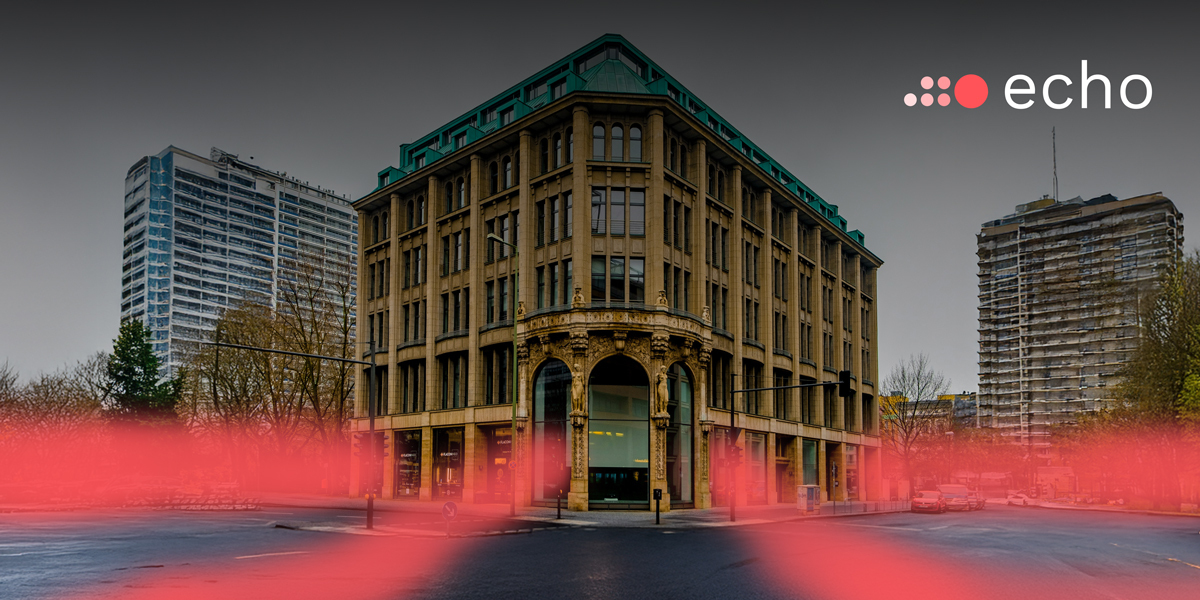How competitive heatmaps reveal what's driving POS performance
Explore how competitive heatmaps transform retail by optimizing point-of-sale success through geospatial data insights in and around store locations.

Heatmaps are foundational tools for understanding how each store performs, how customers choose between them, and what drives true point-of-sale success. With competitive heatmapping, retailers gain a high-resolution view of foot traffic patterns in and around store locations, turning passive proximity into active advantage.
Moving beyond the four walls
Indoor traffic patterns are often limited by signal drop-off and inconsistencies. But outside the store, on sidewalks, parking lots, across shopping centers and high streets, behavioral data is more stable, scalable, and meaningful.
Competitive heatmaps focus on these broader flows: where foot traffic clusters, how people move between your store and a competitor’s, and which zones drive higher POS performance across your network.
The result is a comparative advantage across regions, formats, or banners.
Identifying high-performing trade zones
With geospatial heatmaps, retailers can pinpoint the hot zones that consistently drive performance based on external visibility, accessibility, and neighborhood dynamics.
For example:
- Are flagship locations capturing the full potential of local foot traffic?
- Are newer competitors diverting visits from legacy sites?
- Are seasonal shifts changing the draw radius of your best-performing stores?
By visualizing traffic density, dwell patterns, and catchment overlap, teams can detect which trade zones are heating up—or cooling off—and realign resources accordingly.
Understanding store cannibalization and cross-visitation
When store networks grow, so do competitive overlaps. Heatmaps can expose cross-visitation patterns: when customers visit your store and a nearby competitor in the same trip, or when two of your own stores pull from the same foot traffic base.
This matters for realigning store responsibilities across dense networks, reducing unnecessary internal competition, and measuring true share-of-visit in blended retail zones.
For example, if two stores are five blocks apart and sharing a customer base, heatmaps can guide staffing allocation, or a decision to consolidate and reinvest elsewhere.
Benchmarking against the competition
Footfall and dwell time around your locations mean little without context. Competitive heatmaps layer your performance against what’s happening across the street or down the plaza.
Retailers use this to:
- Measure visit lift or loss after a competitor opens or closes
- Track which chains are gaining traction in shared markets
- Identify underserved pockets with clear white space
Instead of benchmarking stores in isolation, heatmaps position your footprint in the context of local competition, which helps you see where you're outperforming, underdelivering, or sitting on untapped demand.
Smarter POS support through catchment and timing
It’s about when customers show up and how far they’ve come. Competitive heatmaps enriched with mobility data reveal:
- Catchment zone density by daypart
- Travel patterns across retail nodes
- Demographic insights tied to high-traffic corridors
This data informs:
- POS campaign timing and relevance
- Tailored promotions for commuter vs. neighborhood zones
When one grocery location sees peak traffic from 5:00–7:00 PM and another peaks at 11:00 AM, that informs POS setups, staffing, and marketing strategy on a store-by-store basis.
Echo Analytics turns heatmaps into performance maps
Our geospatial data provides clean POI data for precise store identification and categorization, footfall and dwell metrics to measure true visit intensity, catchment and cross-visitation analytics for market context, and competitive overlays that bring local dynamics into sharp focus.
Built for retail teams that need to act
We provide data that is designed for merchandisers, operators, real estate strategists, and retail marketers. Whether you're trying to rebalance performance across regions, justify lease renewals with traffic-backed ROI, or refine media plans around true visit patterns, we provide the tools to do it with speed and confidence.
Why competitive heatmaps matter now
Retail is regional. Even in a national or global brand, store-level POS outcomes are driven by local context. That’s what competitive heatmaps capture true draw zones based on observed mobility, store-level benchmarking against peers and competitors and behavioral insight that bridges the gap between traffic and transaction
Ready to connect traffic to transactions?
Echo helps retailers visualize, compare, and improve POS performance across store networks using real-world behavior, not assumptions. Heatmaps aren’t just maps; they are a strategic essential.

FAQ
What are competitive heatmaps in retail?
Competitive heatmaps are visual tools that use geospatial and mobility data to show foot traffic, visit patterns, and behavior around retail locations. Unlike in-store heatmaps, they focus on how customers interact with stores across regions, helping retailers benchmark performance and identify high-opportunity trade zones.
How do competitive heatmaps improve POS performance?
They reveal how foot traffic translates to sales by mapping customer movement between stores, highlighting catchment areas, dwell times, and cross-visitation. This allows retailers to optimize marketing, merchandising, and operations on a store-by-store basis.
Can competitive heatmaps help identify underperforming stores?
Yes. By layering traffic data with competitor presence and visit density, heatmaps expose where stores are underleveraging local demand or losing visits to nearby competitors. This can inform SKU adjustments, targeted campaigns, or strategic store realignment.
What kind of data powers competitive heatmaps?
Competitive heatmaps use POI data, footfall counts, dwell time, mobility patterns, and catchment analytics. Tools like Echo Analytics enrich these datasets with competitive overlays, allowing retailers to visualize their performance in local context.
How are competitive heatmaps different from indoor heatmaps?
Indoor heatmaps track behavior inside a store and often rely on in-store sensors or Wi-Fi. Competitive heatmaps focus on the external environment—between locations, around shopping centers, or across a market—making them more scalable and relevant for POS strategy.










